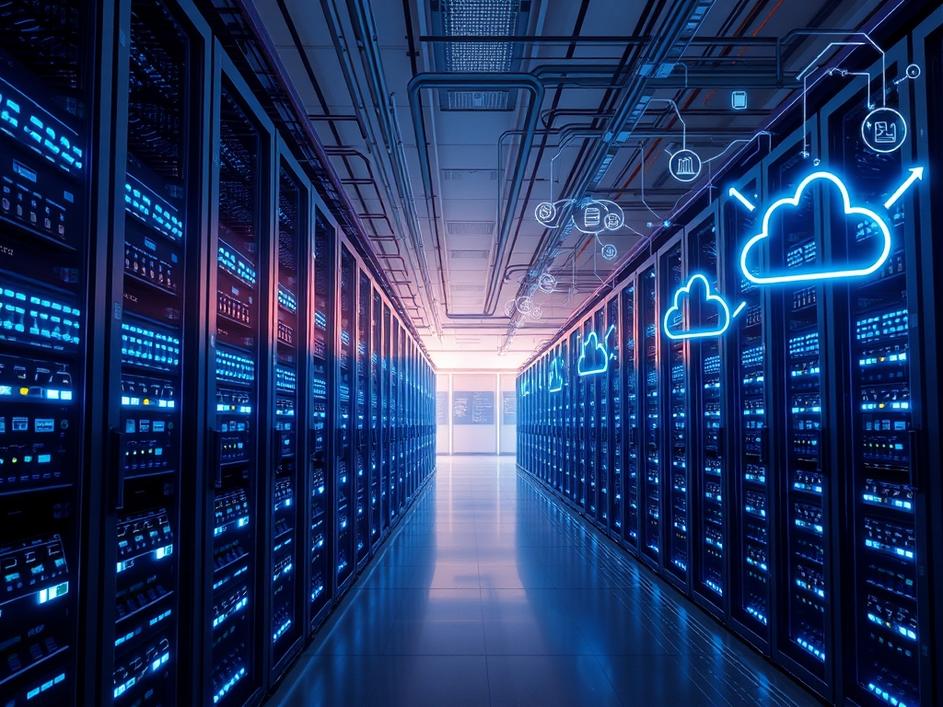


We are a digital agency helping businesses develop immersive, engaging, and user-focused web, app, and software solutions.
2310 Mira Vista Ave
Montrose, CA 91020
2500+ reviews based on client feedback

What's Included?
ToggleThink about your day. You stream a movie, check the weather on your phone, send an email for work, or even just scroll through social media. All these everyday actions, and countless more, rely on something you probably never see: data centers. These massive, secure buildings are packed with computers that store, process, and transmit the information that makes our modern world tick. They are, in a very real sense, the engine of our digital lives. A recent outlook suggests that the U.S. data center market is set to explode, reaching an incredible value of over $381 billion by 2035. That’s a huge jump, growing at more than 10% each year, and it tells us a lot about where our digital future is headed. But with such rapid expansion comes big questions and even bigger challenges.
So, why are data centers suddenly getting so much bigger? Well, a few key things are pushing this growth forward. First up is Artificial Intelligence, or AI. Every time you ask a virtual assistant a question, get a personalized recommendation, or see a self-driving car in the news, you’re looking at something powered by AI. And AI needs a lot of raw computing power to learn and operate, which means more servers in data centers. Then there’s the ongoing boom of cloud computing. Businesses of all sizes, from tiny startups to giant corporations, are moving their operations to the cloud. This means they’re not hosting their own servers anymore; instead, they’re using big data centers run by companies like Amazon, Microsoft, or Google. People also want to upgrade their digital tools and systems. We want faster, smoother, and more connected experiences online, and that requires constant updates and bigger, better infrastructure behind the scenes. These three forces together are creating a demand for data center capacity that’s unlike anything we’ve seen before.
But here’s the catch: all these powerful computers need a lot of electricity. A really lot. One of the biggest hurdles for this fast-growing data center market is simply finding enough power and getting it to where it needs to go. We’re talking about huge amounts of energy, enough to power small towns, being consumed by a single data center. Our existing power grids, which deliver electricity across the country, were not really built for this kind of sudden, concentrated demand. It’s not just about generating more electricity; it’s also about building new transmission lines to carry that power, and doing it in a way that’s reliable and environmentally sound. Finding locations with ample, stable power is becoming harder, and getting approval for new power infrastructure can take years. This means the pace of power delivery might not keep up with the pace of digital demand, creating a bottleneck that could slow down progress.
This power crunch means the industry can’t just keep building bigger data centers and hoping for the best. They need to get smarter. A lot of bright minds are working on new ways to make data centers use less energy. This includes better cooling systems, which are a huge power drain, and more efficient server hardware. We’re also seeing more interest in what’s called “edge computing.” Instead of sending all data to one huge central data center far away, edge computing places smaller data centers closer to where the data is actually created and used – like in a city or even inside a factory. This can reduce the amount of energy needed to move data around and make things faster. Plus, more companies are looking at using renewable energy sources, like solar and wind power, to run their data centers. It’s a good step for the planet, but also a way to secure a more stable and predictable power supply.
This massive growth in the U.S. data center market isn’t just about tech companies and power grids; it has a ripple effect across the entire economy. Building and maintaining these facilities creates a lot of jobs, from construction workers and electricians to highly specialized IT professionals and security personnel. New data centers often bring significant investment to the areas where they’re built, boosting local economies and tax revenues. We’re seeing new hubs of digital infrastructure emerging, which can attract other tech-related businesses and foster innovation in those regions. So, while the immediate focus is on powering the digital future, there’s also a story here about economic development and how the demand for data shapes our physical landscape and job market.
As we look ahead to 2035 and beyond, the path for the U.S. data center market is clear: massive growth, driven by an ever-increasing reliance on digital tools and smart technologies. But it’s also a path filled with challenges, especially around energy. Getting this right isn’t just about hitting big financial targets; it’s about ensuring our digital infrastructure can support the innovations we expect and the services we depend on every single day. It means making smart choices about where we build, how we power these centers, and what technologies we invest in. The goal is to build a robust, sustainable digital future that keeps pace with our imagination, while also respecting our resources and environment. The next decade will be a critical time for navigating these complex demands, and the decisions made now will shape our digital world for generations to come.


Leave a reply